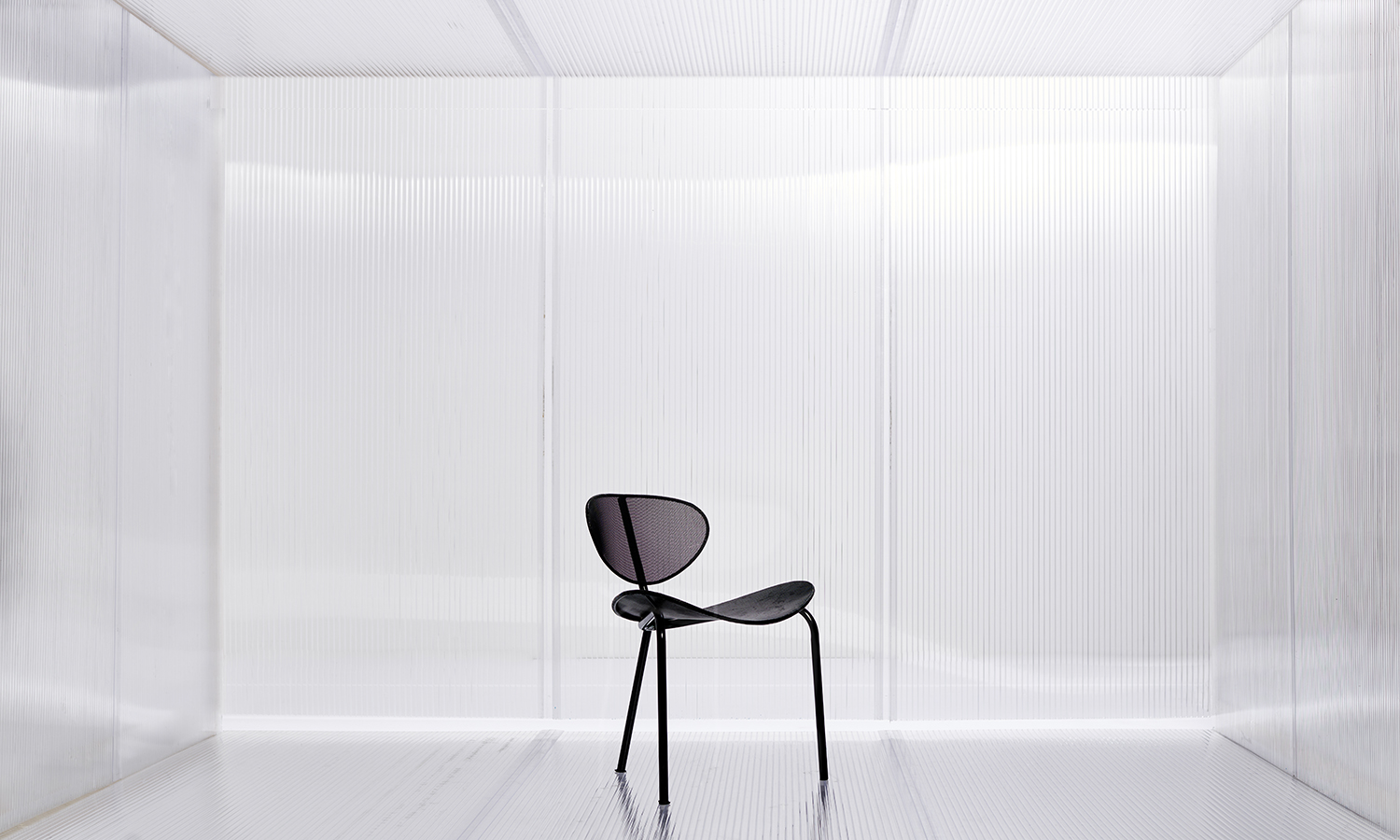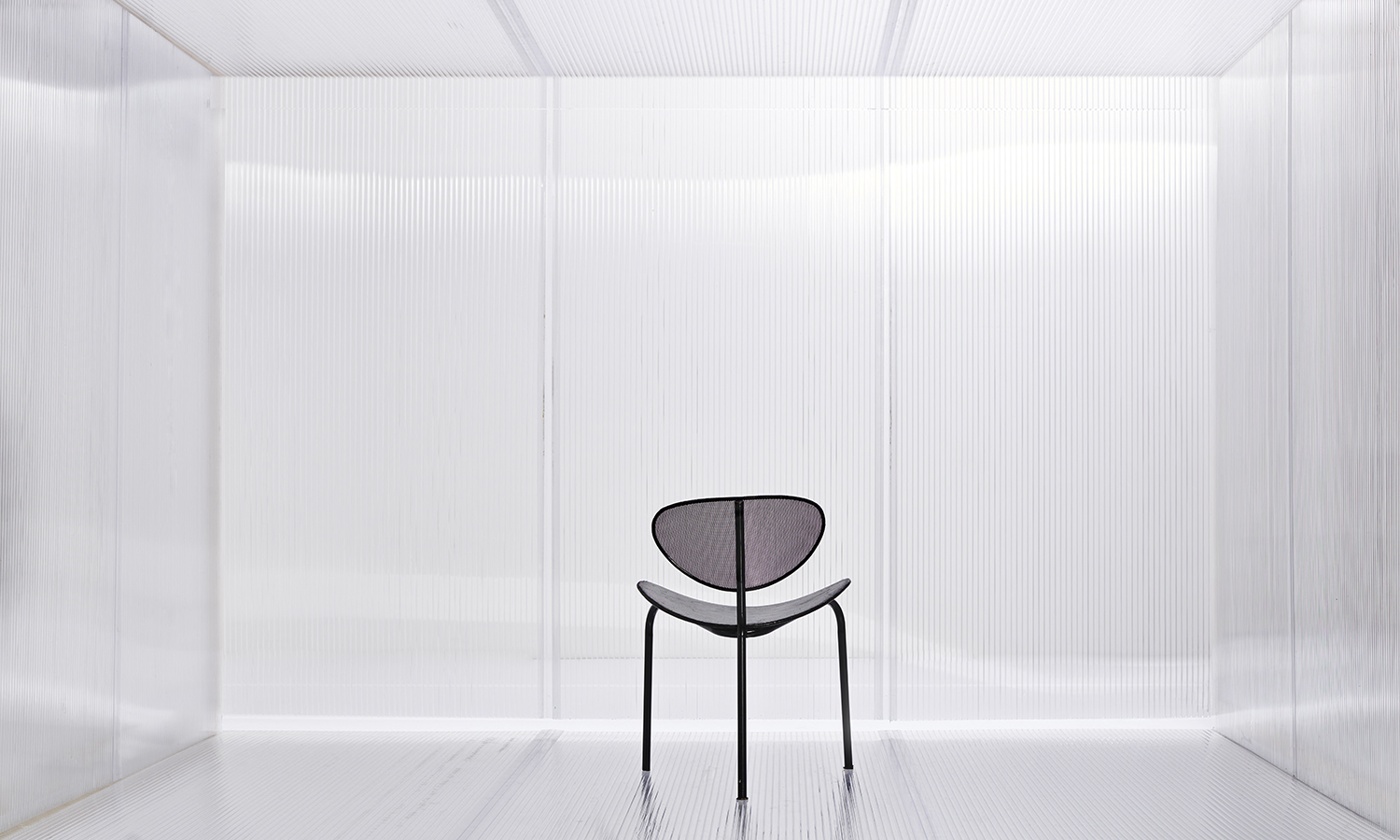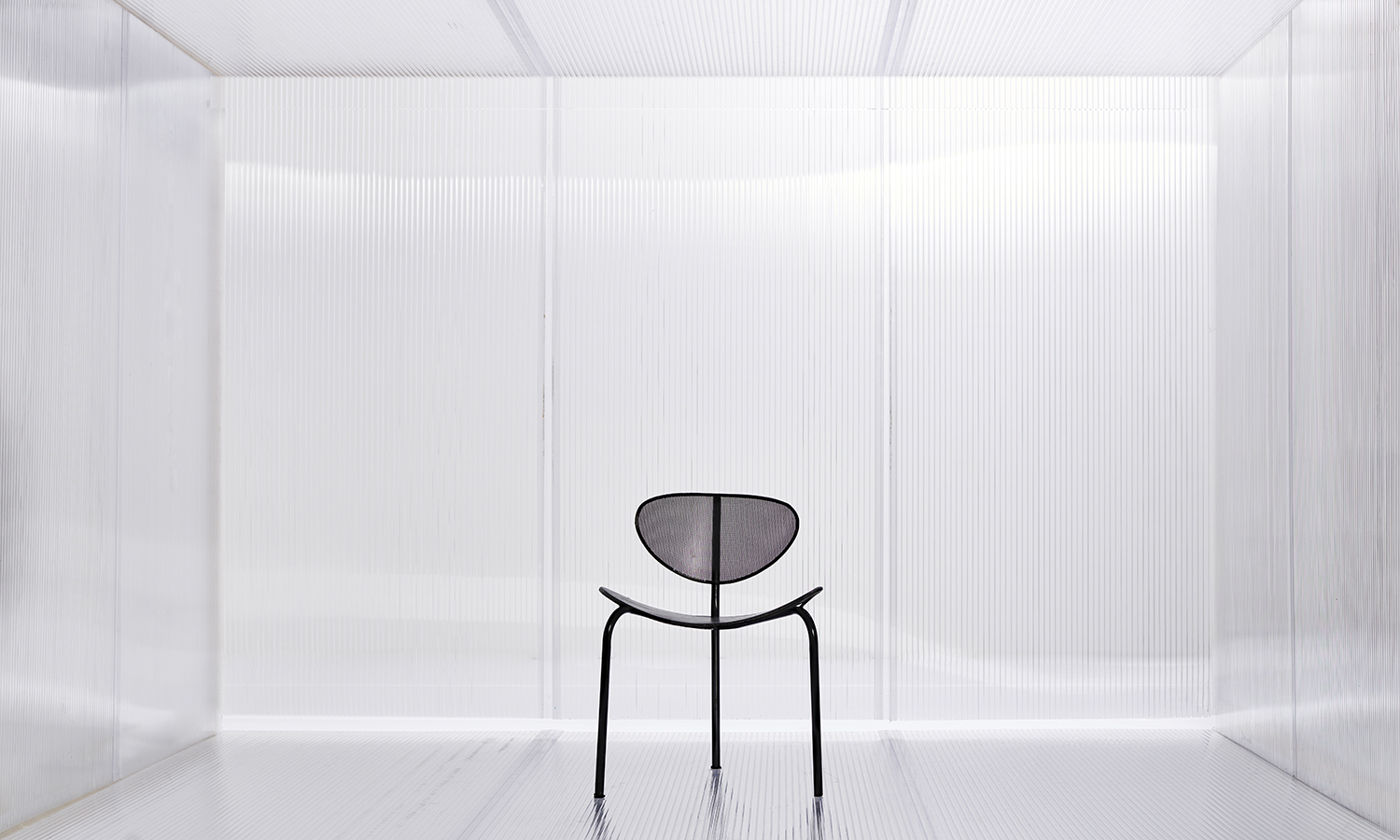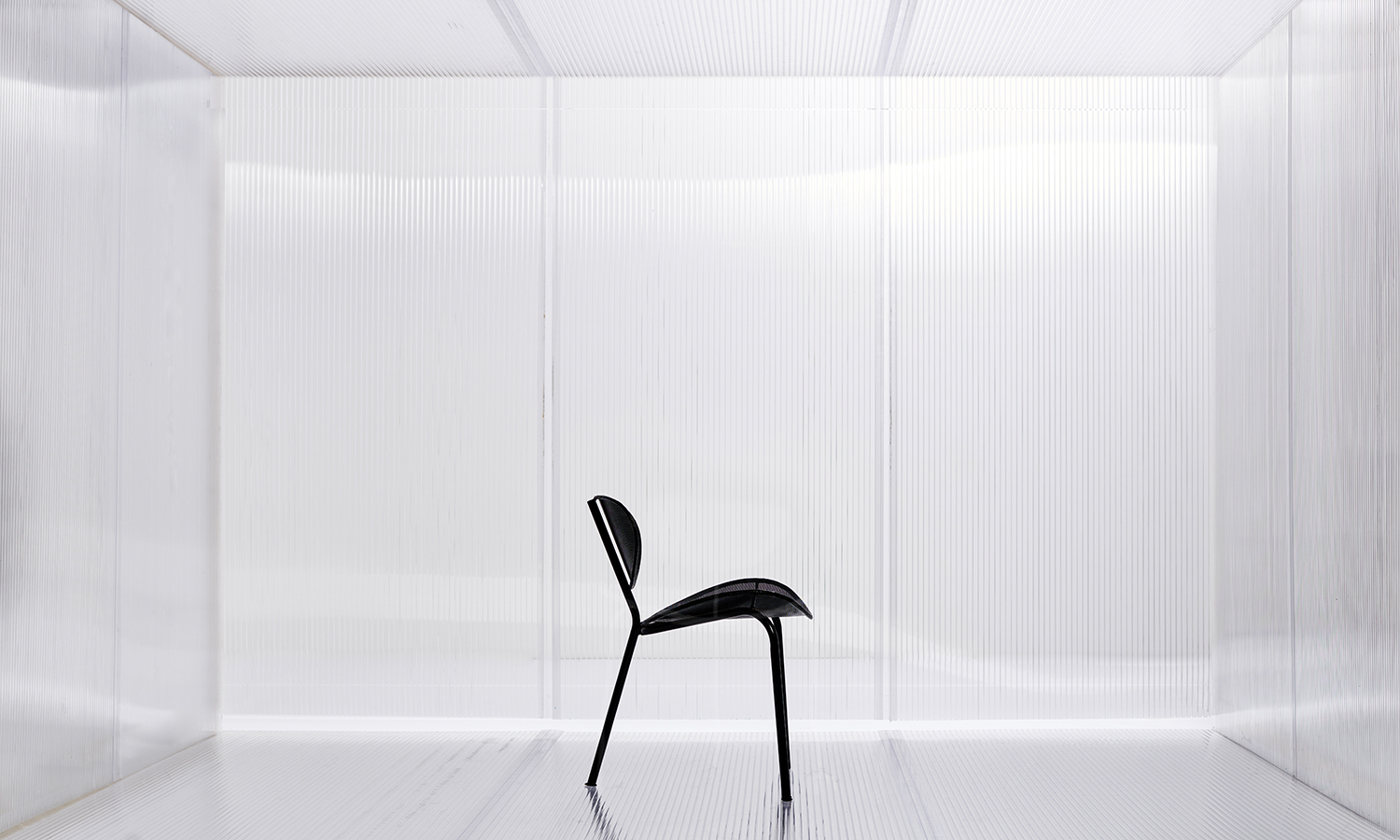Mathieu Matégot
‘Nagasaki’ Chair,
Ca. 1950
Black painted metal.
Dimensions
H. 73.5 x D. 55.5 x W. 54 cm
biography

Mathieu Matégot
1910 - 2001,
Hungary
Mathieu Matégot (1910-2001) was a French designer and decorator, pioneering the use of perforated metal in post-war design.
Of Hungarian origin, he moved to Paris in the 1930s after studying at the Budapest School of Fine Arts. After the Second World War, he turned to furniture design and made his mark with the invention of Rigitulle, a unique material that combines perforated sheet metal and folded metal, lending lightness and elegance to his creations.
His most famous works include the Nagasaki chair (1954), which has become an icon of modern design, and lighting fixtures with their organic, ethereal forms. He also designed furniture for major brands such as Steiner, and created textile decors for prestigious buildings, including the French pavilion at Expo 58 in Brussels.
Mathieu Matégot remains a major figure in twentieth-century design, renowned for his innovative approach to metal and his timeless aesthetic. Today, his highly sought-after creations are exhibited in museums such as the Centre Pompidou in Paris.




